Complete Guide to US Mint Locations: History and Functions
My Complete Guide to Coin Mint Locations: History and Functions I’m Stephen Pfiel, a numismatic coin dealer with decades of experience sourcing and selling precious metal coins—products made from precious metals like gold and silver—for collectors and investors. The United...
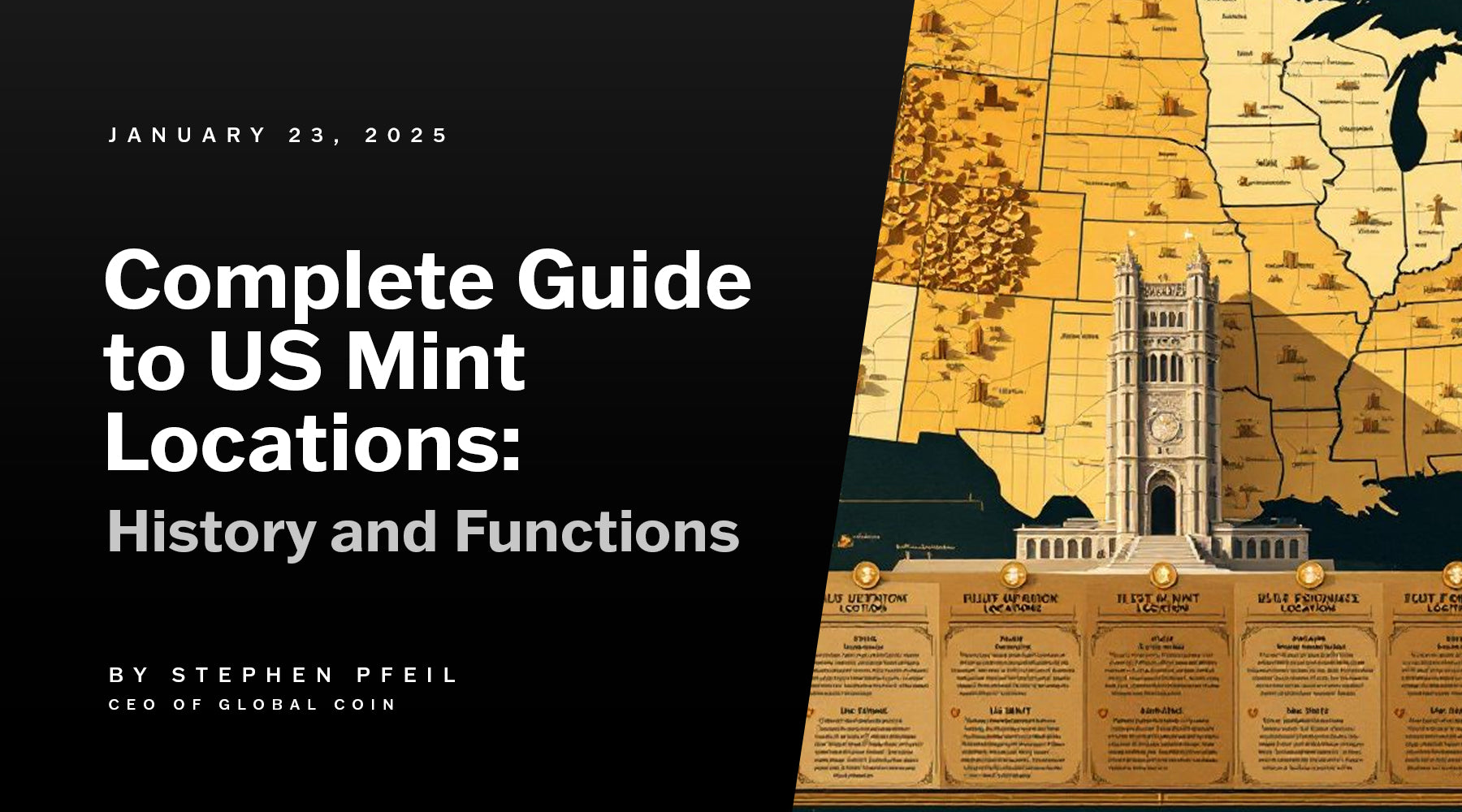
My Complete Guide to Coin Mint Locations: History and Functions
I’m Stephen Pfiel, a numismatic coin dealer with decades of experience sourcing and selling precious metal coins—products made from precious metals like gold and silver—for collectors and investors. The United States Mint’s coin mint locations, each a dedicated mint facility, have always fascinated me—they’re not just factories but storied institutions that shape American coinage. From the historic Philadelphia Mint facility to the secure vaults of Fort Knox, each site plays a unique role in crafting coins and preserving wealth. In this coin mint locations guide, I’ll share my insights on their history, production, and significance, updated with October 1, 2025, spot prices (gold at $3,882/oz, platinum at $1,586/oz). Whether you’re a collector or investor, this guide will help you understand the heart of U.S. numismatics.
Disclaimer: I'm the founder and CEO of Global Coin, a dealer of precious metal coins. This content is for informational purposes only and isn’t investment, financial, or legal advice. Investors should conduct due diligence and consult a qualified financial professional. Gold and rare coin investments carry risks, and past performance doesn’t guarantee future results.
Key Takeaways
-
The Philadelphia Mint, founded in 1792, is the U.S.’s first and largest mint, minting coins as its core function, producing diverse coinage and serving as an educational hub.
-
The Denver Mint, born from the Colorado Gold Rush, crafts circulating coins and stores vast gold reserves ($3,882/oz in 2025).
-
The San Francisco Mint, surviving the 1906 earthquake, excels in collectible coins, blending history with modern tech.
-
The West Point Mint, a bullion powerhouse, produces American Eagle coins in gold ($3,882/oz) and platinum ($1,586/oz).
-
Fort Knox, a 1936 depository, safeguards 147 million ounces of gold, symbolizing financial security.
Introduction to US Mint System
The United States Mint system is the backbone of American coinage, responsible for producing the coins that fuel our daily transactions and preserve our nation’s history. Established in 1792 with the founding of the Philadelphia Mint, the system has grown into a network of specialized facilities, each playing a vital role in crafting circulating coins, commemorative coins, and bullion. Today, the Philadelphia Mint, San Francisco Mint, Denver Mint, and West Point Mint are the primary active sites, each identified by unique mint marks that help collectors and investors trace a coin’s origin. These mints produce everything from gold coins and silver coins to the everyday circulating coins found in your pocket. Overseen by the Department of the Treasury, the United States Mint ensures that every coin—whether struck in Philadelphia, Denver, San Francisco, or West Point—meets the highest standards of quality and authenticity. This system not only supports commerce but also preserves the legacy of American coinage for future generations.
Philadelphia Mint: The Birthplace of U.S. Coinage
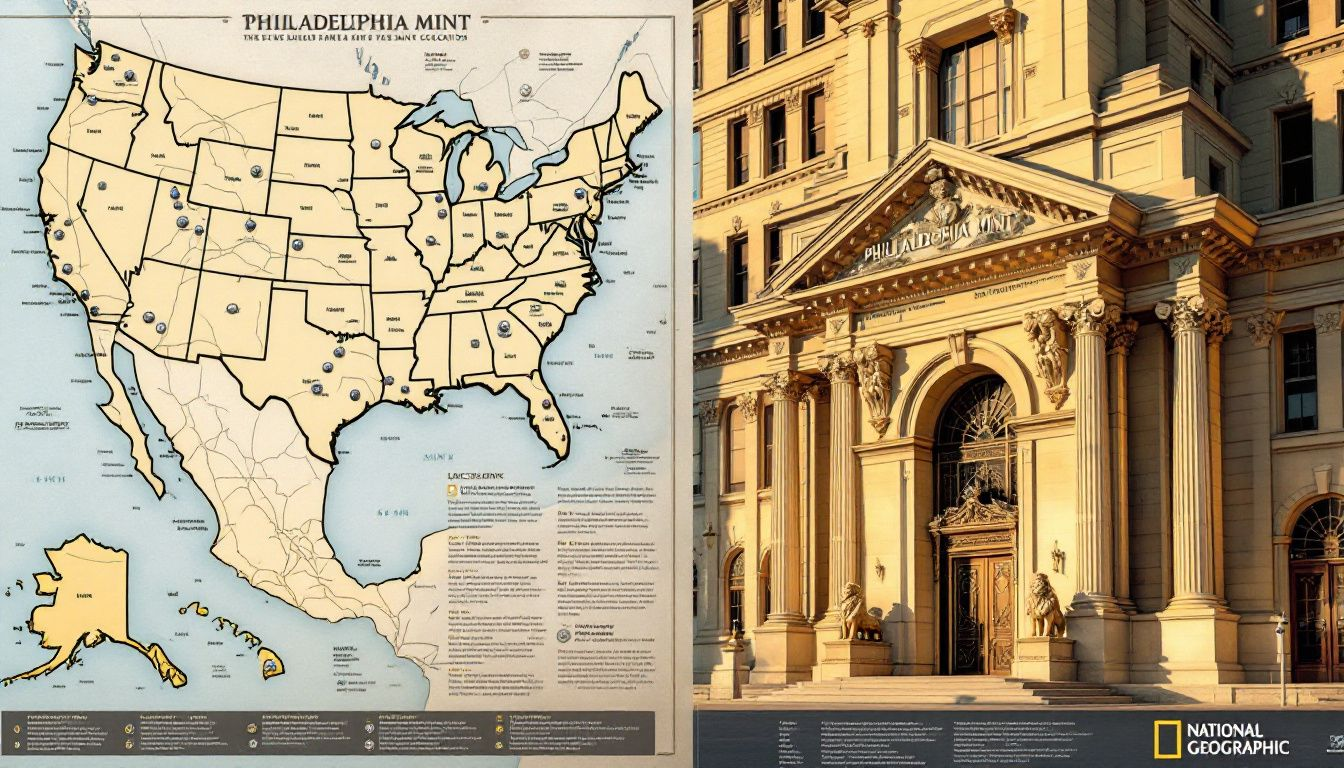
As a dealer, I’ve always admired the Philadelphia Mint, the first coin mint location in the U.S., established in 1792. The Coinage Act of 1792 provided the legal foundation for its creation, enabling the official production and regulation of U.S. coinage. At the time, Philadelphia was the nation's capital, making it a fitting site for the new Mint. Its Neoclassical building reflects the young nation’s ambition, and it remains the largest mint by production. After the original building, construction began on the second Philadelphia Mint in 1829, marking a significant expansion. The Mint began striking coins soon after its founding, and over the years has minted countless coins—circulating coins, commemoratives, medals, and coin dies, including prestigious Congressional Gold Medals. Notably, the Philadelphia Mint has produced nickels, along with other denominations, and its coins are often unmarked or bear a “P.” Beyond production, it’s an educational hub, offering tours (virtual and in-person) that showcase its history and cutting-edge tech. For collectors, Philadelphia’s coins, often unmarked or bearing a “P,” are foundational, with gold coins tied to the $3,882/oz market in 2025. This coin mint location sets the standard for quality and legacy.
Denver Mint: Gold Rush Roots to Modern Coinage

The Denver Mint, another key coin mint location, is a minting facility that began as an assay office in 1906, sparked by the Colorado Gold Rush after Congress authorized its establishment. I’ve handled its coins, marked with a “D,” which include circulating and collectible pieces. In 1969, the coins struck at the Denver Mint exceeded 5 billion—a milestone reflecting its efficiency. Denver also stores significant gold reserves, valued at $3,882/oz in 2025, reinforcing its role in financial security. The struck coins from this facility are highly regarded by collectors. Public tours offer a glimpse into its gold rush roots and modern operations, making it a must-visit for enthusiasts. For investors, Denver’s output, especially gold coins, is a liquid asset in today’s market, and collectors can find coins from various mints to diversify their collections.
San Francisco Mint: A Legacy of Resilience
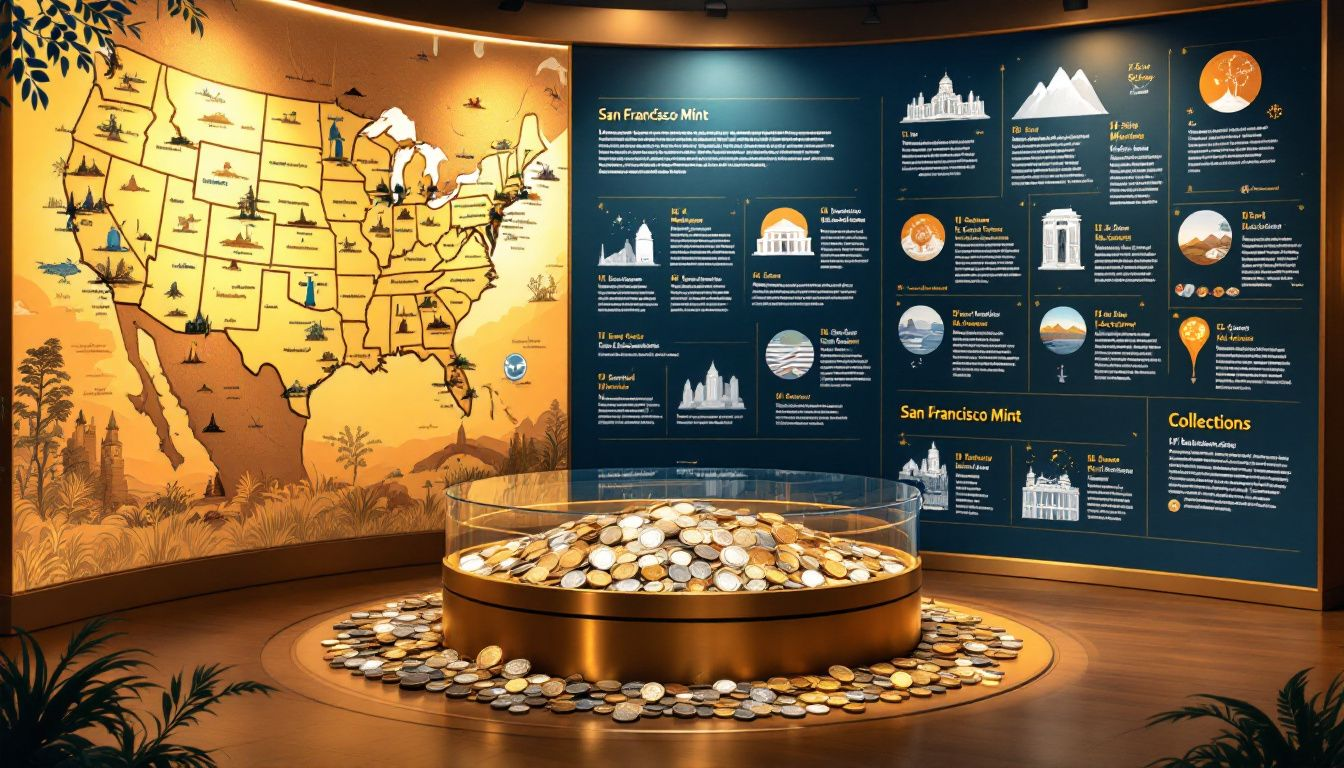
Established in 1854 as a direct response to the California Gold Rush, the San Francisco Mint is a favorite coin mint location for collectors like my clients. Surviving the 1906 earthquake, its grand building—with gold and bronze chandeliers, bronze chandeliers, and marble fireplaces—exudes history. The Mint played a crucial role in producing gold coinage during the 19th century, further cementing its significance. Today, it uses robotic packaging for precision, producing sought-after collectible coins marked with an “S.” I’ve seen collectors clamor for its proof coins, valued for their craftsmanship and rarity. At $3,882/oz for gold and $1,586/oz for platinum, San Francisco’s coins blend history with investment potential, making it a cornerstone of numismatics.
West Point Mint: Bullion and Commemorative Hub
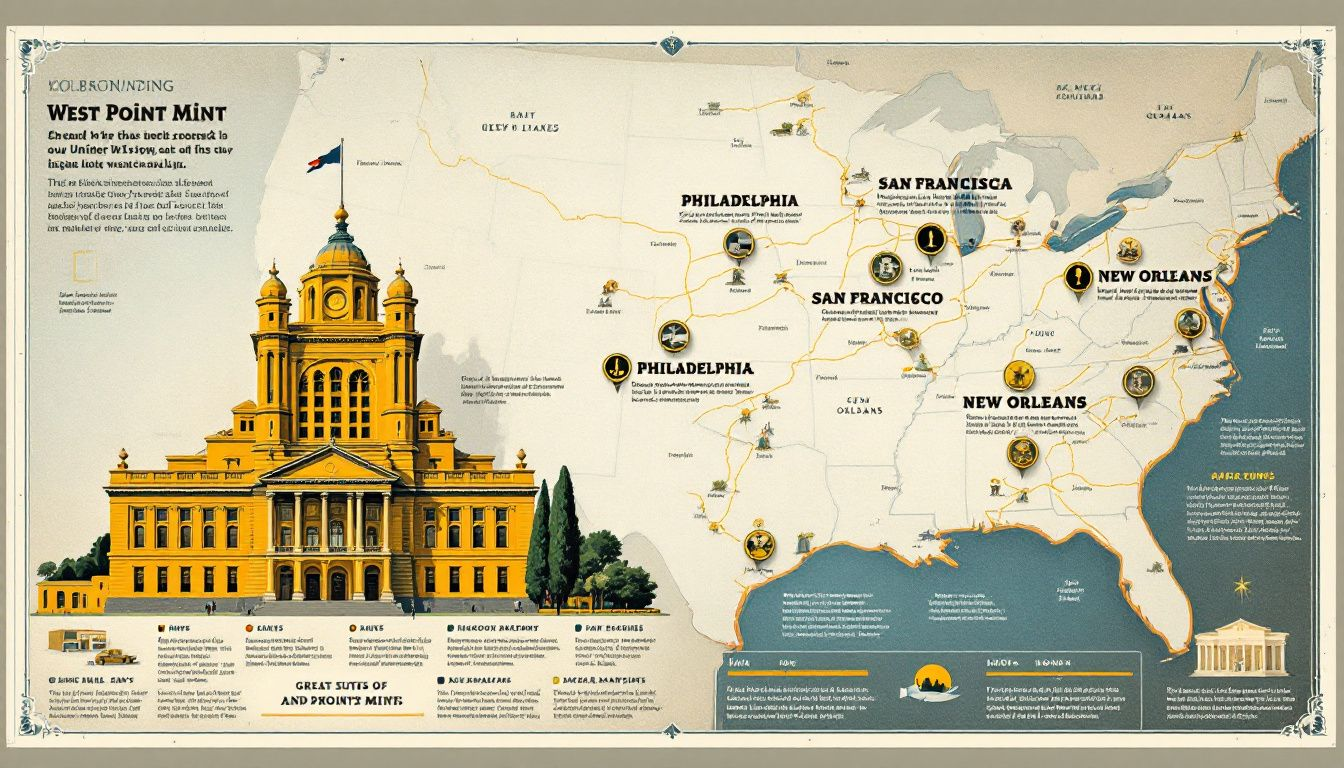
The West Point Mint, designated a branch in 1988 and granted official status as a branch of the U.S. Mint, evolved from a 1938 bullion depository into a key coin mint location. I’ve sold its American Eagle coins—gold ($3,882/oz), silver, platinum ($1,586/oz), and palladium—marked with the distinctive “W mint mark.” Its commemoratives, celebrating American milestones, are collector treasures. In 2019, West Point introduced circulating quarters with the “W” mint mark, sparking excitement among my clients. This mint’s blend of bullion and artistry makes it a go-to for investors and collectors seeking high-value coins.
Fort Knox Bullion Depository: The Vault of Wealth
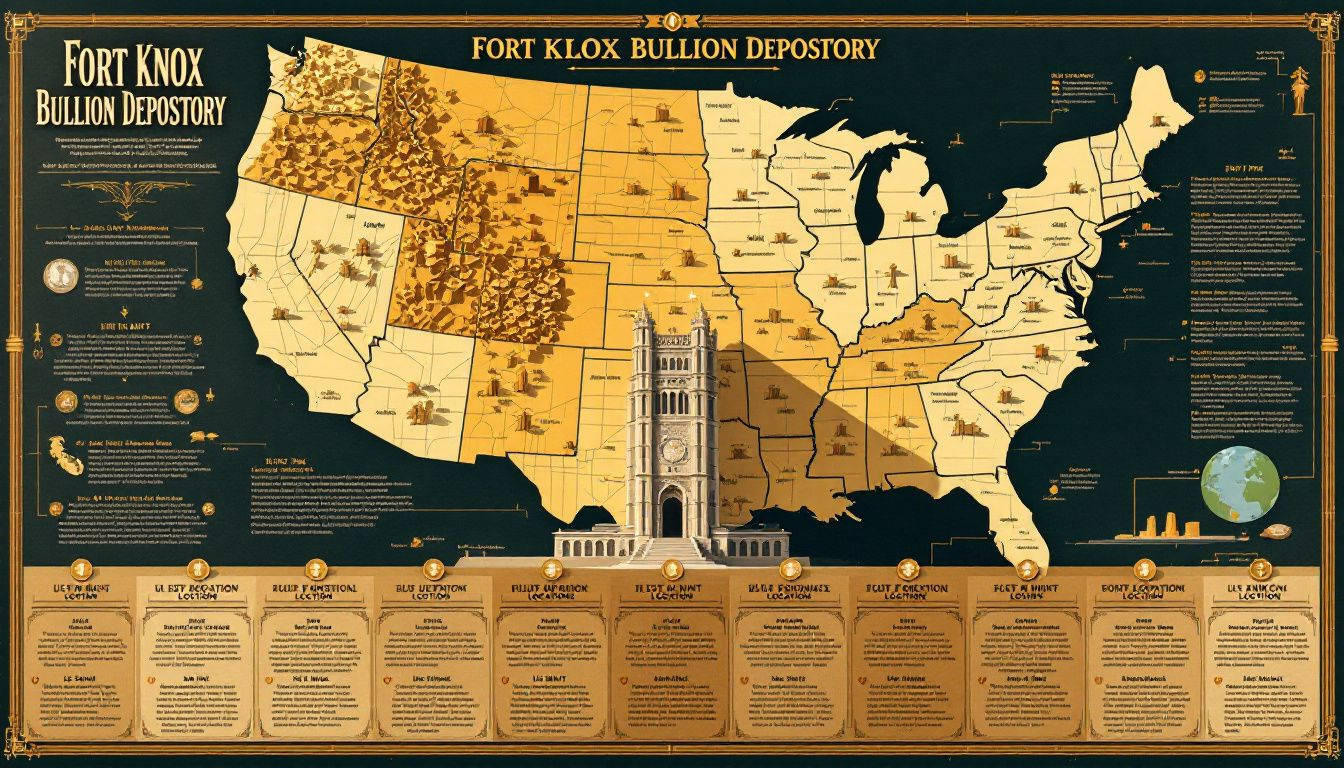
Fort Knox, established in 1936, isn’t a mint but a critical coin mint location for storage, holding 147 million ounces of gold and other precious metals—valued at over $570 billion at $3,882/oz in 2025. Its fortified vaults, guarded by armed security and advanced tech, symbolize U.S. financial strength. I’ve advised clients on gold investments tied to Fort Knox’s legacy, where bullion like American Gold Eagles is stored. For investors, this coin mint location underscores gold’s role as a safe-haven asset in uncertain times.
New Orleans Mint: A Historical Landmark
The New Orleans Mint, a storied coin mint location, opened in the 1830s to meet fiscal demands and address a coin shortage, designed by William Strickland in Greek Revival style. It produced coins until 1909, surviving a 1861 Confederate takeover and a closure in 1839 due to a yellow fever epidemic. Now a National Historic Landmark, it no longer mints but left a legacy of gold coins valued at today’s $3,882/oz. I’ve sourced its rare pieces for collectors, who cherish its historical significance.
Carson City Mint: A Brief but Bold Legacy
Operational from 1870 to 1893, the Carson City Mint, a unique coin mint location, was established largely due to the discovery of the Comstock Lode, the largest silver strike in the country and the primary source of Nevada's abundant silver ore. Its Morgan silver dollars are collector favorites, commanding premiums. Abraham Curry, the first superintendent of the Carson City Mint, played a key role in overseeing its early operations. Now a museum, it offers a glimpse into its short but impactful history. I’ve helped clients secure “CC” coins, prized for their rarity and connection to the Wild West, adding value to collections in 2025’s market.
Charlotte and Dahlonega Mints: Southern Gold Pioneers
Established in 1838, the Charlotte Mint and the Dahlonega Mint—a Georgia facility—were important branch mints within the expanding U.S. Mint system. The Charlotte branch mint opened in 1838, while the Dahlonega Mint opened the same year, both in response to local gold rushes. The mint's operations at each site included gold coin production, administrative management, and security, contributing significantly to regional economic development. Together, these branch mints produced over 1.2 million gold coins worth $5.05 million by 1861. During the Civil War, the Confederate Congress seized control of the Dahlonega Mint, but soon after, both facilities ceased operations under Confederate authority. I’ve seen collectors hunt their “C” and “D” marked coins, now valued at $3,882/oz, for their rarity and historical weight. These mints laid the foundation for U.S. gold currency.
Assay Offices: Supporting Coin Production
Assay offices, like those in New York, Boise, and Seattle, were vital coin mint locations for processing ores to supply mints with gold and other metals. The Charlotte Mint became a Confederate assay office in 1867, later a U.S. one in 1868. New Orleans also served as an assay office post-minting. I appreciate their role in ensuring quality metals for coins like the American Gold Eagle, critical at today’s $3,882/oz gold price.
Washington, D.C. Headquarters: The Administrative Core
The U.S. Mint’s Washington, D.C. headquarters, located in the nation's capital and designed by Alfred Bult Mullett, is the nerve center of coin mint locations. It oversees research, marketing, and policy, coordinating all facilities. Repurposed as an assay office from 1895 to 1933, it’s protected by the U.S. Mint Police. I rely on its standards to ensure the coins I sell, like platinum Eagles ($1,586/oz), meet top quality.
Mint Mark and Coin Production
A mint mark is more than just a tiny letter on a coin—it’s a key to its story. The United States Mint uses mint marks to indicate where a coin was produced, making them essential for collectors and numismatists who value a coin’s history and rarity. The most common mint marks are “P” for Philadelphia, “D” for Denver, “S” for San Francisco, and “W” for West Point. Each mint mark can dramatically influence a coin’s desirability and value, especially when certain marks are produced in limited quantities. For example, coins from the West Point Mint, marked with a “W,” are highly prized, as are rare issues like the 1916-D Mercury dime from Denver. Collectors often seek out coins from specific mints to complete sets or to own a piece of history from a particular location. Whether you’re holding a modern commemorative coin or a classic silver dollar, the mint mark is your guide to its origin and significance within the vast world of United States Mint coinage.
Coin Production Process
The journey of a coin from concept to your collection is a blend of artistry, precision, and advanced technology. It all starts with a design, crafted by talented artists and sculptors who capture the spirit of America in metal. Once a design is approved by the Secretary of the Treasury, the United States Mint creates a die—a specialized metal stamp that will imprint the design onto blank coin planchets. These planchets, made from metals like gold, silver, or copper, are then struck by the die under immense pressure, bringing the coin to life. After minting, each coin undergoes rigorous inspection to ensure it meets the Mint’s exacting standards. The finished coins are then packaged and distributed, whether they’re destined to become circulating coins in everyday commerce, commemorative coins for collectors, or bullion coins for investors. This meticulous process ensures that every coin produced by the United States Mint is a testament to quality, history, and American craftsmanship.
US Mint System Operations
Behind every coin in your pocket or collection is a complex operation managed by the United States Mint system. Operating under the Department of the Treasury, the Mint is tasked with producing coins, managing the nation’s gold and silver reserves, and overseeing the movement of bullion. Key facilities like the Fort Knox Bullion Depository and the West Point Bullion Depository play a crucial role in safeguarding vast quantities of gold and silver, ensuring the stability and security of America’s precious metal assets. The Director of the United States Mint oversees these operations, ensuring that every aspect—from coin production to bullion storage—is efficient, secure, and transparent. Whether it’s producing coins for circulation, striking commemorative pieces, or managing bullion depositories, the United States Mint system is dedicated to upholding the nation’s financial integrity and numismatic heritage.
Mint Locations and Tourism
For coin enthusiasts and history lovers alike, visiting a United States Mint location is a journey into the heart of American heritage. The Philadelphia Mint, the nation’s oldest, welcomes visitors with public tours that showcase its rich history and modern coin production. The San Francisco Mint, affectionately known as the “Granite Lady,” stands as a testament to resilience and offers guided tours of its storied halls. The Denver Mint and West Point Mint also open their doors to the public, providing a behind-the-scenes look at how gold and silver coins are crafted. Even historic sites like the New Orleans Mint and Carson City Mint, though no longer active in coin production, have been transformed into museums where visitors can explore exhibits on gold and silver coinage, minting technology, and the colorful stories behind each location. For those unable to visit in person, the United States Mint offers virtual tours and educational programs, making the fascinating world of coin production accessible to everyone. Whether you’re in Denver, Philadelphia, San Francisco, West Point, Carson City, or New Orleans, each mint location offers a unique window into the legacy and artistry of American coins.
Summary
This coin mint locations guide reveals the rich history of United States coins and U.S. Mint facilities. From Philadelphia’s pioneering role to Fort Knox’s gold vaults ($3,882/oz), each site shapes American coinage. They’ve adapted to modern demands, producing coins valued at today’s gold ($3,882/oz) and platinum ($1,586/oz) prices, cherished by collectors and investors. At Global Coin, we source premium coins from these mints, ensuring quality and authenticity for your portfolio.
Call to Action: Curious about coin mint locations? Explore Global Coin’s curated selection at shopglobalcoin.com to own a piece of U.S. numismatic history.
Frequently Asked Questions
What is the primary function of the Philadelphia Mint?It produces circulating coins, commemoratives, medals, and dies, serving as a cornerstone of coin mint locations in the U.S. and playing a key role within the broader network of United States mints.
How much gold is stored at Fort Knox?Fort Knox holds 147 million ounces, worth over $570 billion at $3,882/oz in 2025, a key coin mint location for storage.
What significant event did the San Francisco Mint survive?It endured the 1906 earthquake, cementing its legacy among coin mint locations.
What coins does the West Point Mint produce?It crafts American Eagle coins in gold ($3,882/oz), silver, platinum ($1,586/oz), and palladium, plus commemoratives, at this vital coin mint location.billion coins.
Related Articles
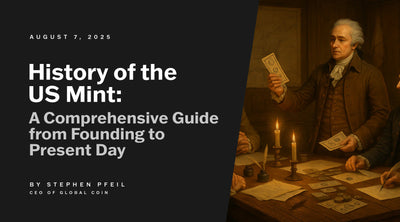
History of US Mint: A Comprehensive Guide from Founding to Present Day
The United States Mint, often simply called the U.S. Mint, stands as a cornerstone of American e...
Discover More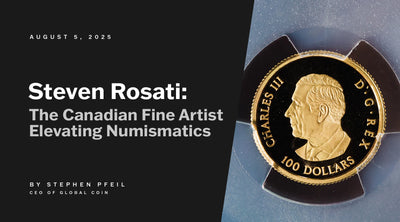
Steven Rosati: The Canadian Fine Artist Elevating Numismatics
As the founder of Global Coin and a numismatist with over 20 years of experience, I’ve handled co...
Discover More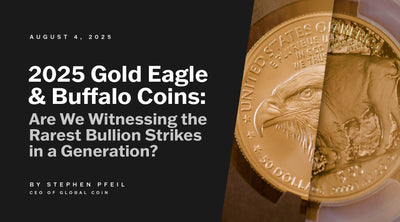
2025 Gold Eagle and Buffalo Coins: Are We Witnessing the Rarest Bullion Strikes in a Generation?
In a world where gold is more than just a commodity—where it’s a legacy asset, a hedge against ...
Discover More

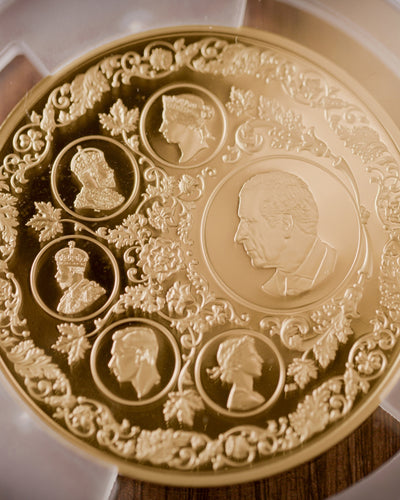
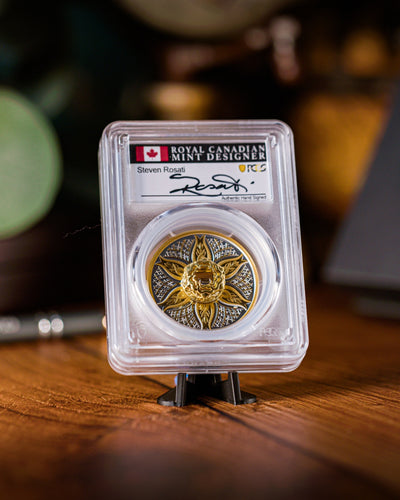
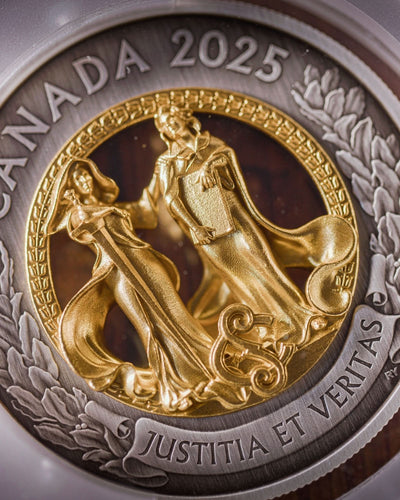
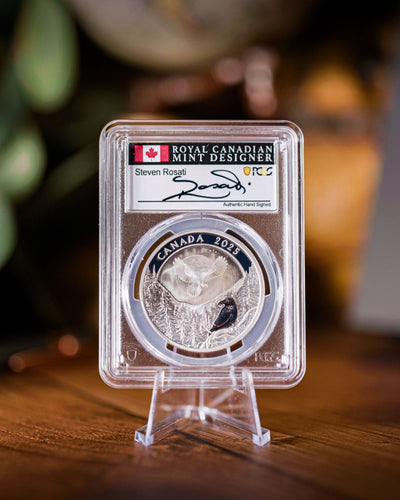
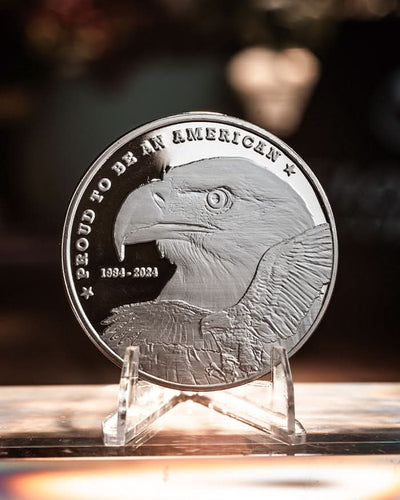
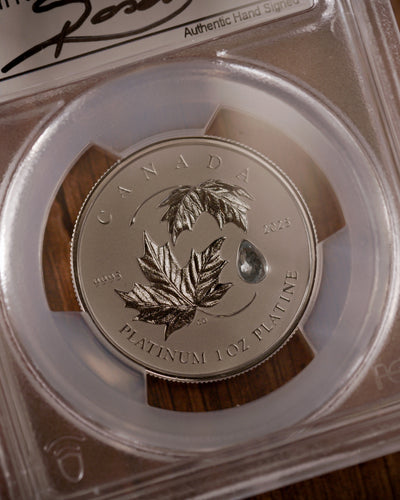
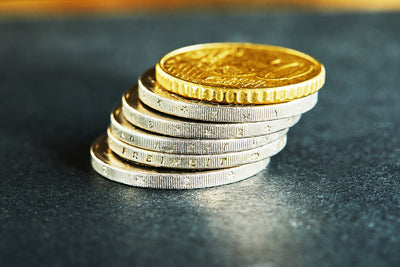
Leave a comment
This site is protected by hCaptcha and the hCaptcha Privacy Policy and Terms of Service apply.